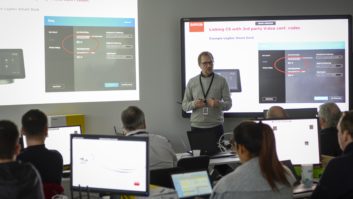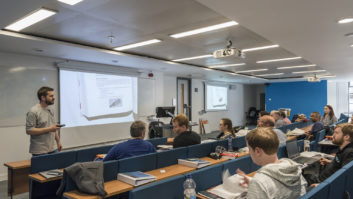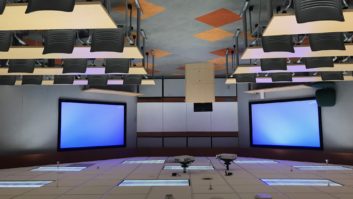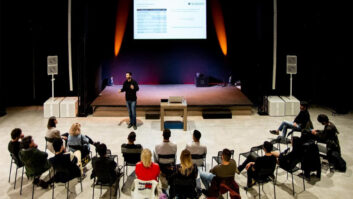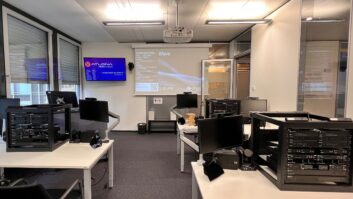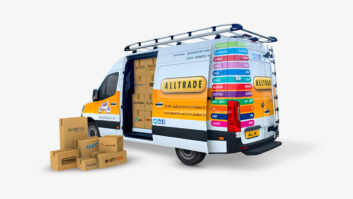If you want to become an electrician or a plumber, there are nationally recognised qualifications you must attain before you can legally ply your trade. But in this increasingly convergent world, what are the appropriate qualifications for systems integrators? If your focus is AV, you could consider becoming either a Certified Technology Specialist (CTS) or Certified Technology Specialist – Installation (CTS-I) through InfoComm, the US-based organisation that is becoming increasingly active in Europe.
Alternatively, European integrators focused on the residential sector have a growing education programme provided by CEDIA (Custom Electronic Design and Installation Association). But, for many, key areas of their knowledge base will come from the manufacturing sector, in the form of product-specific training.
Natural questions for anyone considering training include which courses are available, where they are held, how long will they take and what skills will be gained. Installation Europe approached a number of trainers in search of answers.
Range and scope
The official AMX University (AMXU) catalogue lists 37 on-demand or online courses, along with 10 instructor-led classroom courses ranging in duration from half a day to five days. The AMXU programme is delivered in more than 20 countries.
“We are committed to the ongoing expansion of our multi-language support of the AMXU programme,” says Brian Davies, European technology director, AMX Europe. A key component of this is online delivery, which AMX terms its LMS, or Learning Management System. It is currently available in nine languages, as is the expanding on-demand programme, while instructor-led classes are offered in 10 languages.
Crestron is another manufacturer with training centres across the world. Training material originates in the US but is then adapted to suit each region. “Regional variations add diversity to the training programme, to really help target the local markets,” explains Mike Backler, head of training/technical support at Crestron UK.
“Training courses are available in English, French, German, Italian and Chinese. In the UK alone we have nearly 1,000 students passing through our doors in any calendar year. And with 10 different courses running this year, we are set to achieve that again.”
Biamp Systems’ training programme started at the US parent company and subsequently went international. “Biamp has been providing the Audia certified training programme in its Beaverton, Oregon Learning Centre for the past six years,” comments Steve Metzger, vice president of business development at the company.
“In 2008, Biamp established training sites in Mumbai, Amsterdam and Bangkok. These are fitted with the same equipment that a student in Beaverton would use.”
Aiding understanding
The language that courses are conducted in, as well as their locations, will always be a key issue. After all, trying to absorb technical information can be hard enough without having to translate specialist terms in your head.
Projector manufacturer projectiondesign runs courses at three levels – Silver, Gold and Platinum – as well as courses specifically for service and maintenance personnel.
“The CPS Silver Level is conducted in the local languages our sales managers speak,” explains David Aleksandersen, CPS and training programme manager at projectiondesign. “This broadens the target group quite a lot. New this year is that the exam for these courses will be answered online.
“The rest of the courses are conducted in English. Some will be held with simultaneous translation in countries with limited knowledge of English.” He reckons the company has trained around 1,000 individuals.
Not every company that offers training is a manufacturer. For instance, AWE Europe is an AV distributor but conducts courses for its installer customers. Stuart Tickle, managing director at the company, explains: “We are in an industry that is totally reliant on technical products, a large majority of which won’t function reliably if they aren’t installed or programmed properly. Good product training is therefore an essential part of a professional trade supply model.”
No experience required
One question every would-be attendee of a course must ask is ‘what prior knowledge do I need?’. CEDIA offers a two-day foundation course, for which no industry experience or academic qualifications are required. Depending on the chosen career path, the possibilities beyond this include Installer Level 1 and Designer Level 1 certification, both of which have week-long courses available.
Many manufacturers follow a similar scheme, starting sessions with an entry level that assumes no specialist skills. For Crestron, Backler offers: “Training courses are graduated so that each course builds on the last. At the heart of the course structure lies the Foundation, which is designed to ground them in Crestron. Certain aspects are helped by previous experience but for the most part we need only have a logical mind and a degree of computer literacy.”
“There are no external requirements,” says Aleksandersen at projectiondesign. “However, we require those who want to attend the Gold course to pass the Silver exam, and to attend the Platinum courses you should have passed the Gold.”
“There is no question that industry convergence is happening, and the best qualified people are those with strong backgrounds in AV, IT/networking, telecommunications and wireless technologies,” says Davies. “While our industry is maturing, we recognise that many students can be effective with our products without external training or formal degrees. Consequently, the core AMXU programme has been developed to educate students with experience ranging from beginner to expert.”
Steve Horton, director of education at NuVo Technologies, says that attendees to the Know HOW (Hands On Workshop) Tour in the US tend to come from one of a few backgrounds.
“I’ve had people in our classes who have maybe only run wire and they’ve come because the owner of the business has decided that they should learn how to program,” Horton affirms. “I’ve had installers who’ve had relatively little experience with anything IT-based. I have also found a lot of IT-based people, who are getting into the installation side. It’s amazing how many of those guys are getting involved with this because they have this high level of knowledge and they’re seeing an opportunity that they can tap into. For them, the programming isn’t an issue but they need to learn about the physical installation.”
TOA Corporation in the UK runs a wide range of audio-based courses. “Each delegate is assessed for each type of course, but in general they would need a minimum level of expertise for their chosen course unless it is a beginner’s topic,” says sales and marketing director Brett Downing. “There is no official certification, however, each delegate will be asked to configure and complete an application before moving to the next level.”
Cover the basics
Karl Christmas is deputy general manager of Yamaha Commercial Audio in the UK. “As we train people from all parts of the industry, it is difficult to qualify how much each person knows about the topic,” he comments. “You may have a room full of very experienced installers, but they will have different levels of experience. We always first try to cover the relative basics just to ensure we all understand the subject.”
Martin Professional runs a number of courses from its base in Kent. “Basic electrical knowledge is all you need to start,” says training co-ordinator Fiona Toombs. Most of the courses are devoted to product servicing, with the exception of a one-day course on installing and setting up the Light Jockey, a Windows-based controller. “All of the courses have an exam at the end (except Light Jockey), and once successfully completed you will be given a certificate.”
Davies says: “You can invest in training or in technical support, and the better you do the former, the less you need to do the latter. A well-trained dealer is more efficient in the project cycle, resulting in more completed projects in the same time period and hence more profit.”
“We strive to promote all aspects of the business, be it products or people,” says Crestron’s Backler. “We point out our ties to industry and through training forge greater links with institutions in the academic world and in industry. If it helps unburden the support side of our business I would say that is a happy by-product.”
“The advantages of giving in-depth training to our customers are many,” says Christmas for Yamaha. “Of course, the more people know about our equipment, the less likely they are to contact our support network, but we can also make the products even more appealing to customers by pointing out features that even the more experienced users were unaware of.
“Finally, it’s a great opportunity to interact with engineers and installers in the field. It helps us to understand their needs, and it means we can either offer an instant solution or put it on the great wish list for future products.”
“It is TOA’s intention to put something back into the industry on an educational platform and not as a direct sales tool,” says Downing. “All courses take into account many products that are available and do not utilise only TOA products. At most seminars, a guest speaker will attend and will be responsible for a large amount of the content. In January we appointed Peter Mapp of Peter Mapp Associates to prepare and present a paper on room acoustics/voice evacuation and legislation, including EN54.”
Continuous process
Installers who successfully complete the NuVo Know HOW workshop achieve Platinum Certification and gain 2.5 CEDIA Continuing Education Unit (CEU) credits. Horton says safety will be a key reason for installers to attend his courses when the company rolls out its Renovia system, which networks multi-room audio via mains wiring.
“With AC, we’re not talking about low-voltage wiring any more – it’s high voltage,” he points out. “There are building codes you have to know about and there’s a new business model as part of that whole education.”
“CEDIA education teaches science and engineering skills in a way that can be applied to any manufacturer’s product range,” says Peter Aylett, education manager for CEDIA Region. “This knowledge is essential for an individual to understand how to make an engineering decision rather than a guess.
“Manufacturers who insist that their dealers are trained are looking to do so to reduce the overhead on their technical support staff; enhance customer perception of their products by making sure they are installed and working to their optimum; and build a stronger and more trusting long-term relationship with the dealer.”
